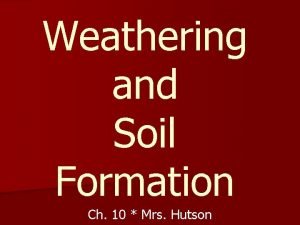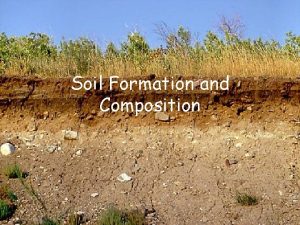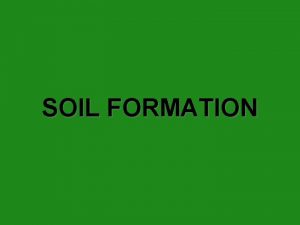Soil and its formation Soil Structure Plants are






- Slides: 6

Soil and its formation

Soil Structure • Plants are the lungs of the Earth but, in spite of their enormous importance to life on this planet, most of the soils that support them are only about two meters thick and many are much thinner. • Soil is a sequence of rather well defined layers. • The upper layer is litter made of partially decomposed grassy material.

Soil Structure

Soil Structure • Next is topsoil with its humus made of decaying plant and animal matter. The humus gives topsoil its dark color, acidic properties and is a rich supply of nutrients and minerals. • Rocks in this layer are small and scattered. Water and air are important components of this layer. • The subsoil has more and larger rocks with less humus, so it is lighter in color. Minerals are common in subsoil.

Soil Structure • Below this layer is bedrock. Where bedrock is exposed, the combined action of physical weathering (wind, water), chemical weathering (water, chemicals), plant root action, and the activities of animals and microorganisms gradually turn it into soil. • Because these actions and agents are less effective as we look deeper into the ground, it takes thousands of years to create a soil depth that can support flourishing plant communities.

Soil Structure • Water on the surface is called surface water; when it percolates down it becomes ground water. • As the water descends, it carries down nutrients and minerals - this leeching becomes a problem in some cases. • Plant root systems try to correct the problem by reaching far down and bringing the needed chemicals back toward the upper soil levels. • The depth where the earth becomes saturated with water is the top of the water table.











